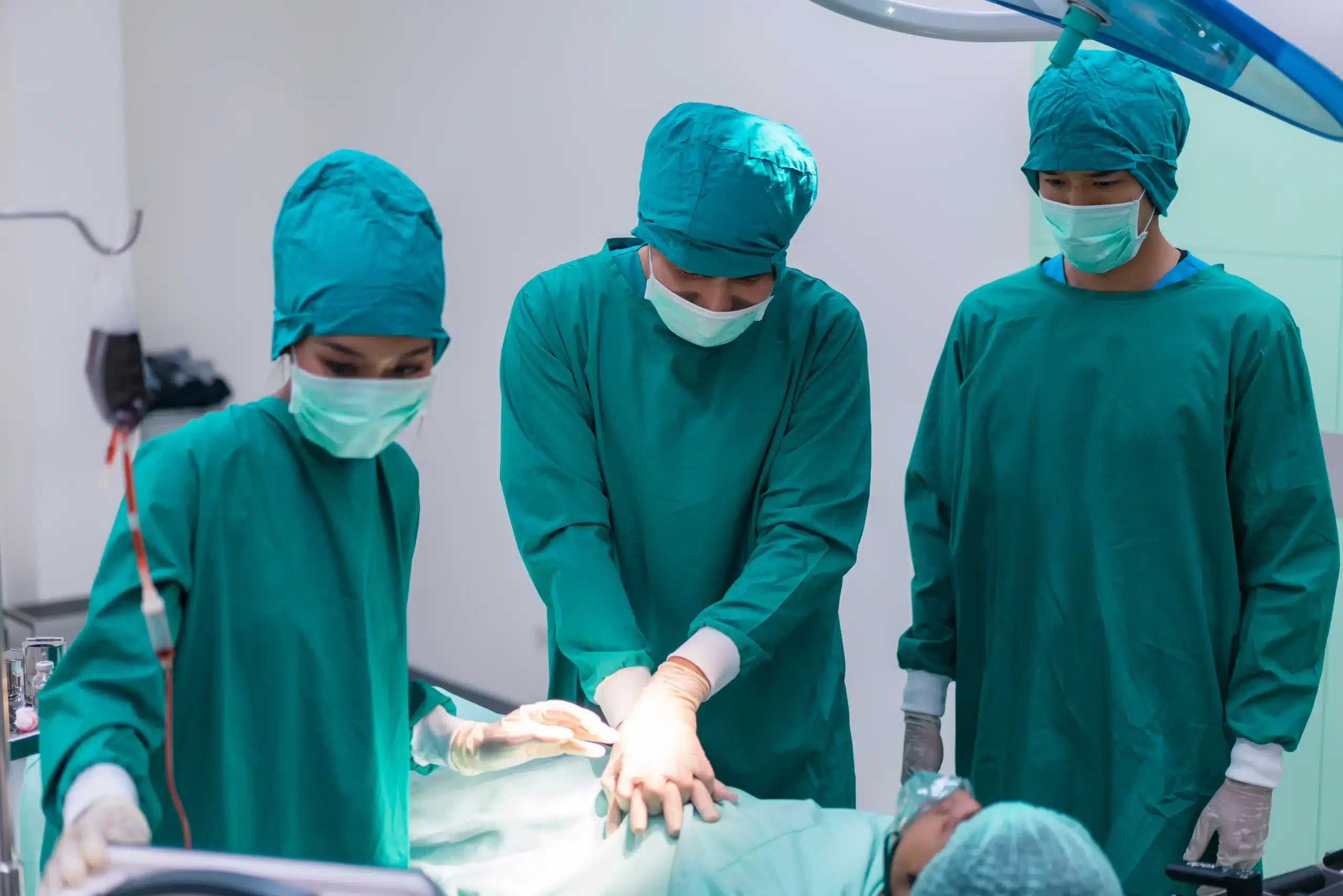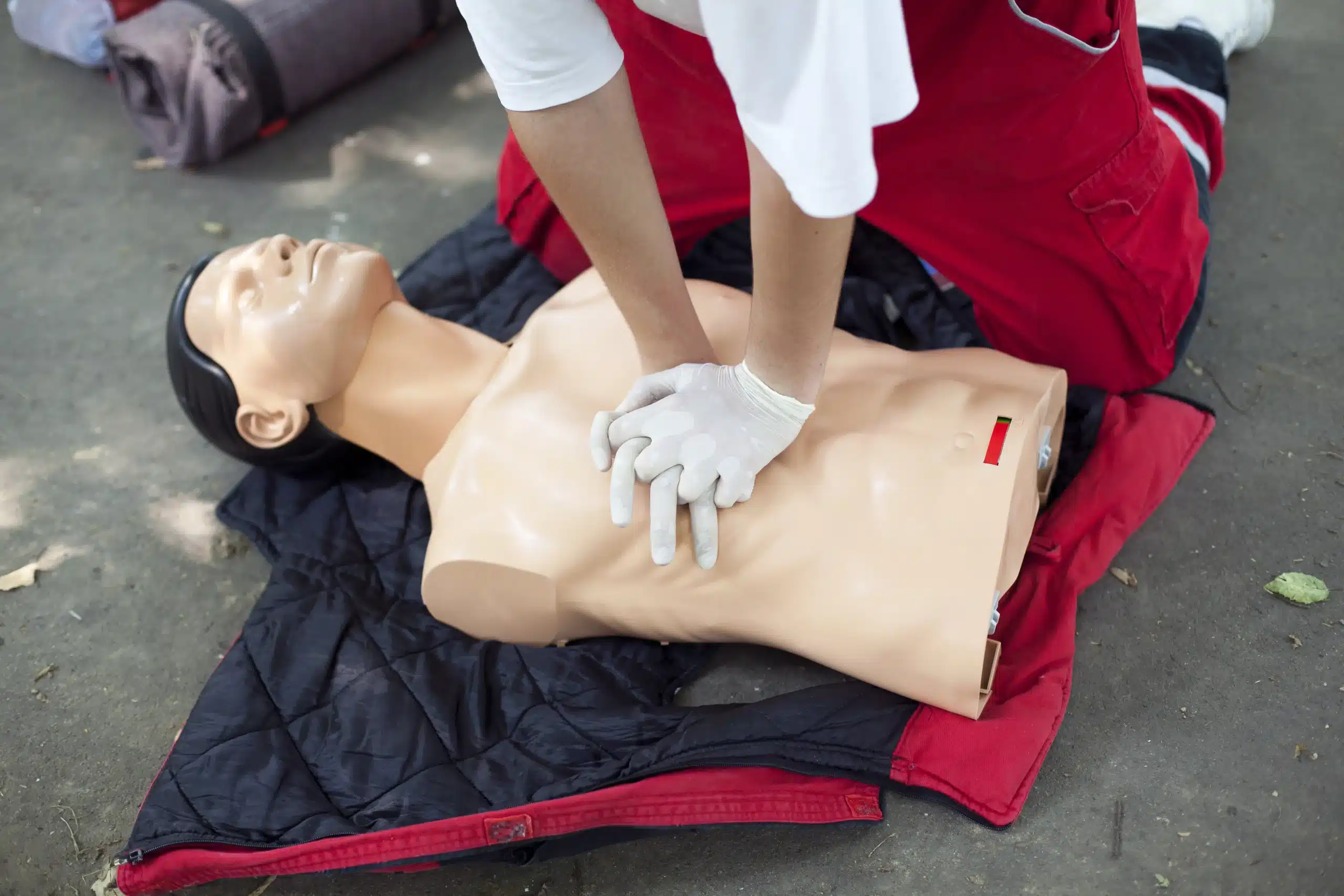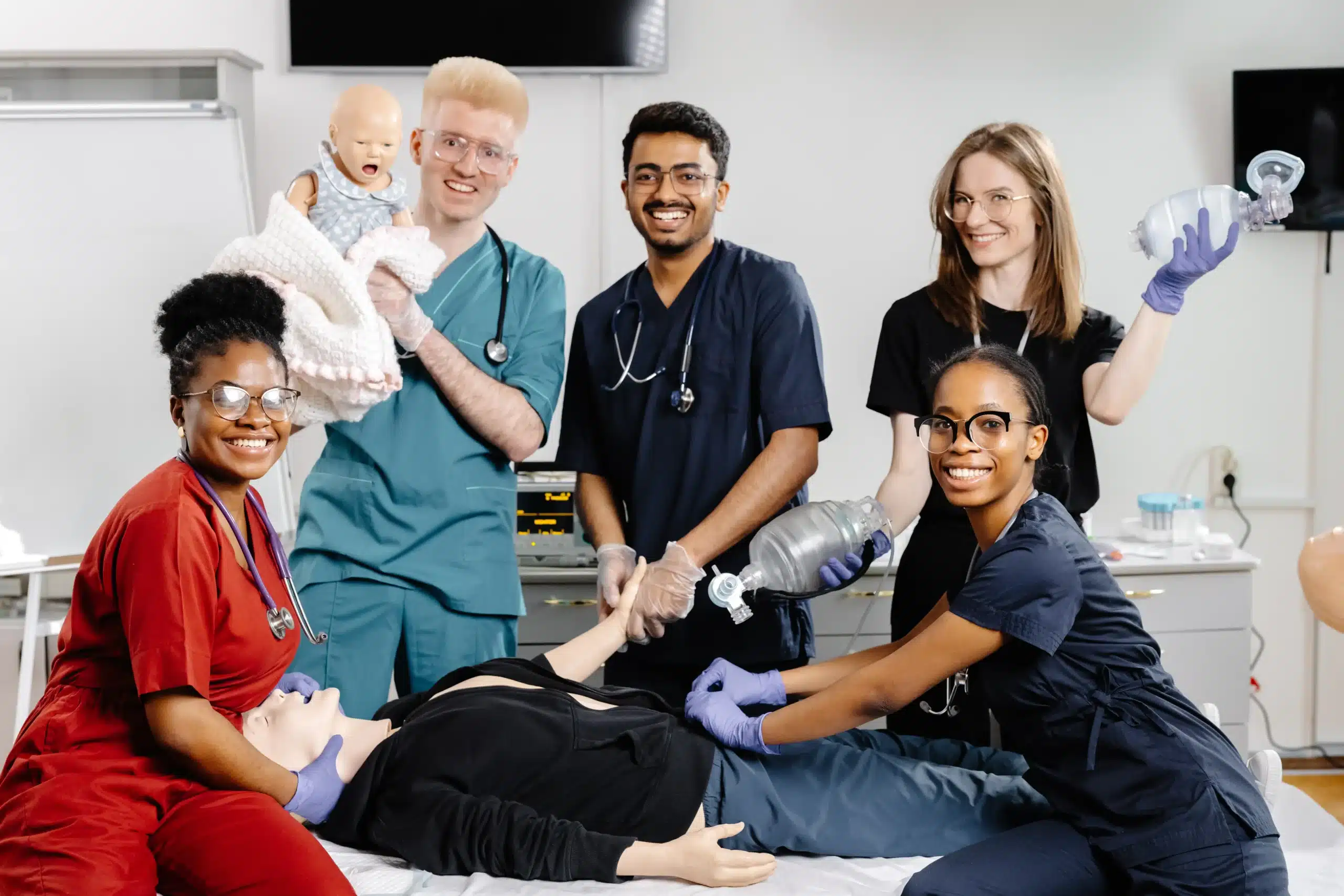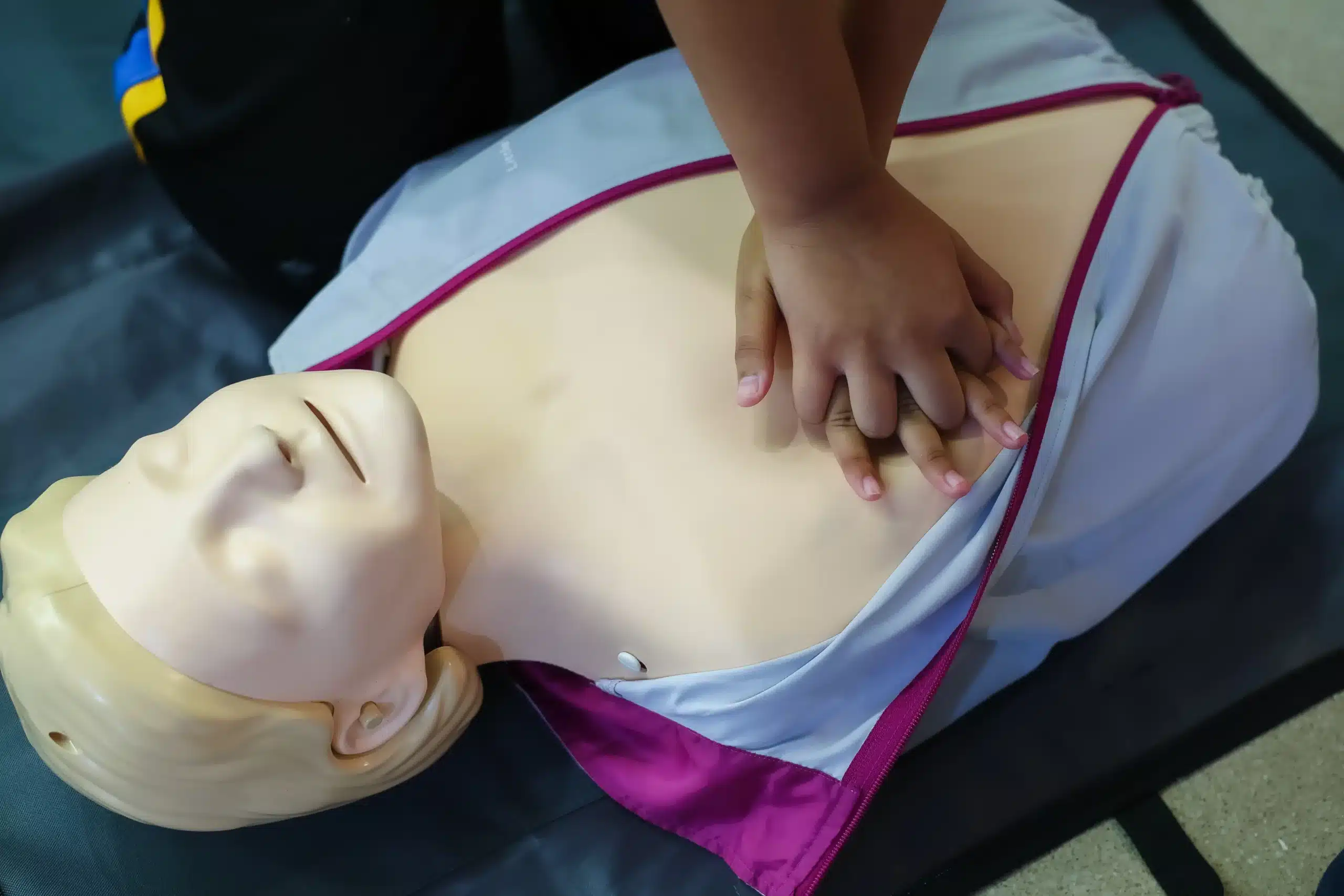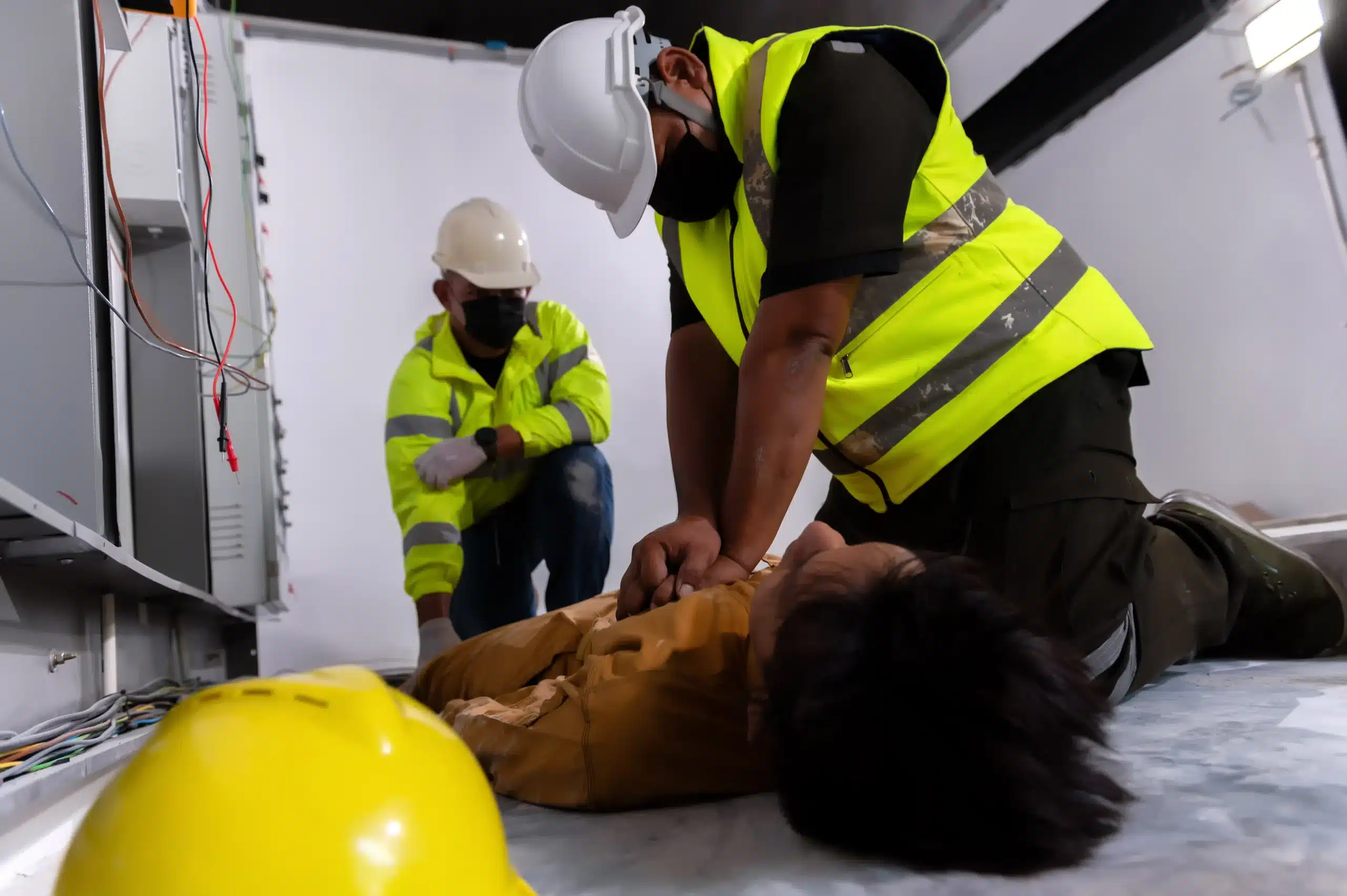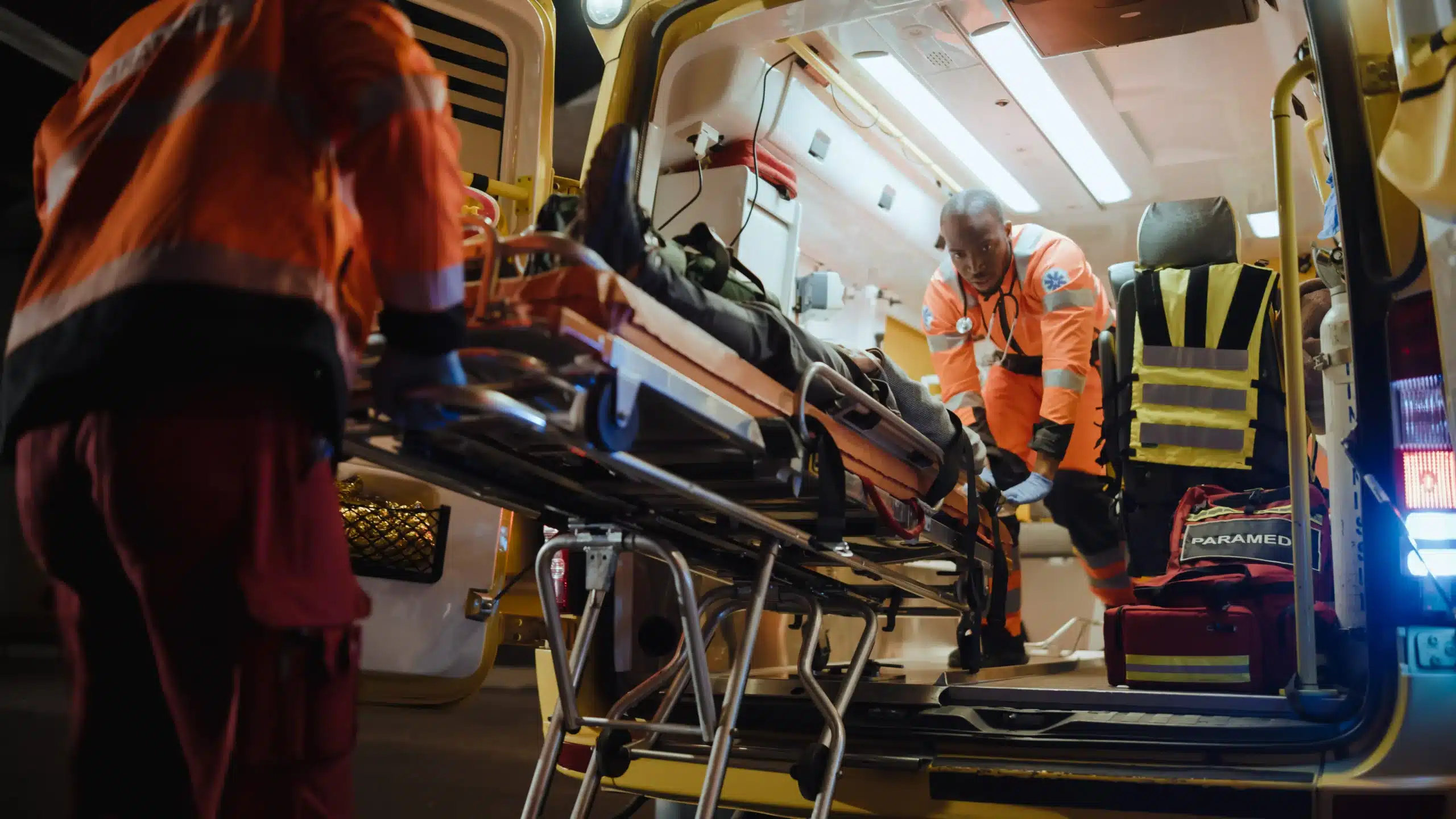Emergencies can happen unexpectedly, and being prepared can make all the difference. BLS certification in Walnut Creek provides you with the skills and confidence to respond effectively in critical situations, potentially saving lives. This guide explores the world of BLS certification, from understanding what BLS is to choosing the right training program and maintaining your certification. We’ll discuss the importance of BLS for various professions, the different learning formats available, and the long-term value of BLS skills. Whether you’re considering a career in healthcare or simply want to be a more prepared and confident individual, this guide will provide you with the knowledge and resources you need to get started with BLS certification.
Key Takeaways
- BLS certification equips you with crucial life-saving skills: You’ll learn CPR, AED use, and airway management techniques, enabling you to confidently respond to various medical emergencies. This is invaluable for healthcare professionals, first responders, and anyone who wants to be prepared.
- Choosing the right BLS course is essential: Seek out an accredited provider with experienced instructors, using a format—online, in-person, or blended—that fits your learning style and schedule. Hands-on practice and convenient class times are key factors to consider.
- Maintaining your BLS skills requires ongoing effort: Stay current by recertifying every two years and keeping up with the latest guidelines. Regular practice and continuing education are essential for maintaining your confidence and preparedness in real-world emergencies.
What is BLS Certification & Why is it Important?
What is Basic Life Support (BLS)?
Basic Life Support (BLS) is a critical level of medical care used in life-threatening emergencies. Unlike standard CPR training, BLS certification goes further, equipping individuals with the skills to address a wider range of emergencies. It builds upon the foundation of CPR and adds techniques for handling breathing difficulties and other medical crises. Think of it as the next step up, providing a more comprehensive skill set for those who may encounter emergencies in their professional or personal lives. BLS certification is especially relevant for healthcare providers and first responders, but it’s a valuable asset for anyone who wants to be prepared to help in a crisis. For those looking for affordable options, check out Safety Training Seminars’ Low Price Guarantee.
Key BLS Skills
BLS training covers core life-saving techniques. You’ll learn how to perform high-quality CPR for single and multiple rescuers, including how to use an automated external defibrillator (AED). Airway management is another crucial component, teaching you how to assist someone who is choking. BLS courses also cover essential skills like assessing the scene, recognizing the signs of a cardiac arrest or respiratory distress, and providing appropriate care until more advanced medical help arrives. These skills are regularly updated to reflect the latest scientific guidelines from organizations like the American Heart Association. You can explore more about their courses and offerings on their website.
Importance for Healthcare Professionals & First Responders
For those working in healthcare, BLS certification is often a job requirement. Many medical facilities require their nurses, doctors, and other healthcare professionals to maintain current BLS credentials. It ensures they can respond effectively to emergencies and provide a high standard of patient care. First responders, such as police officers, firefighters, and EMTs, also rely on BLS skills to handle emergencies in the field. Having a solid foundation in BLS allows them to stabilize patients and potentially save lives before transporting them to a hospital. Even if not explicitly required, BLS certification demonstrates a commitment to patient safety and can enhance your professional credibility. You can find BLS courses in Visalia through Safety Training Seminars. They offer a range of courses to fit your schedule and needs. Contact them to learn more about available classes and registration.
Top BLS Certification Providers in Walnut Creek
Finding the right BLS certification provider is key to receiving quality training. Here are a few options in and around Walnut Creek:
Safety Training Seminars
Safety Training Seminars, located in nearby Livermore, offers various certification courses, including BLS, CPR, ACLS, and PALS. They prioritize equipping individuals with the skills needed for life-saving situations and focus on improving community safety and preparedness. Their location makes them accessible to those in the broader East Bay area.
Walnut Creek CPR Training Center
The Walnut Creek CPR Training Center has a long-standing reputation, providing American Heart Association (AHA) certified courses for over two decades. They offer training in BLS, ACLS, and PALS, with a focus on healthcare professionals. Their courses are designed to give participants a strong foundation for responding effectively in emergencies.
American Heart Association Training Centers
The American Heart Association itself offers a variety of training methods for their BLS courses, including blended learning (a mix of online and in-person instruction) and traditional classroom settings. All options are rooted in the AHA’s science-based approach, ensuring participants receive consistent, high-quality training and certification.
Red Cross Certified Training Providers
The American Red Cross also provides a BLS course tailored for healthcare providers. This course covers responding to breathing and cardiac emergencies for adults, children, and infants—an essential certification for anyone working in the medical field.
Walnut Creek Fire Department
Your local fire department can be a valuable resource for BLS training. Check the Walnut Creek Fire Department’s website or contact them directly to inquire about community training sessions or other resources they may offer. Local fire departments often have up-to-date information on training opportunities in the community.
BLS Certification: How it Works
BLS Certification Prerequisites
There are no prerequisites for BLS certification. This means anyone, from healthcare professionals to concerned parents, can enroll in a BLS course. BLS training covers essential life-saving skills, including using an automated external defibrillator (AED), basic airway management, and techniques for assisting someone who is choking. This foundational knowledge is crucial for responding effectively in medical emergencies.
Course Duration & Format Options
Basic Life Support (BLS) certification courses offer flexible learning options. You can choose between blended learning, which combines online coursework with in-person skills practice, and traditional classroom training. Both formats teach the same American Heart Association (AHA) science-based skills and result in the same AHA BLS Course Completion Card. Online BLS certification provides a convenient alternative, especially for busy schedules or those who prefer self-paced learning. Regardless of the format, you’ll receive comprehensive training that prepares you to respond confidently in emergencies. Our BLS courses in Visalia offer various schedules and formats to fit your needs.
Certification Validity & Renewal
BLS certification is valid for two years. To maintain your certification and stay up-to-date with the latest guidelines and practices, you’ll need to renew it every two years. Before taking the recertification test, review the course material, as BLS guidelines can change. Staying informed ensures you’re prepared for recertification and confident in providing effective life support. Our RQI classes offer a streamlined renewal process. We also offer a low price guarantee, ensuring you receive the best value for your training. Contact us with any questions.
What to Expect in a BLS Course
A BLS course equips you with the skills and knowledge to respond effectively to various medical emergencies. Here’s a preview of what you can expect:
Hands-on CPR Practice & Feedback
BLS courses are highly interactive, emphasizing hands-on learning. You’ll practice CPR techniques on mannequins, developing muscle memory and confidence. Instructors provide immediate feedback, helping you refine your compressions and breaths for maximum effectiveness. This practical training underscores the importance of maintaining continuous blood flow during CPR to help prevent brain damage.
AED Training & Use
Automated External Defibrillators (AEDs) are essential life-saving tools, and BLS certification includes training on their proper use. You’ll learn to assess the situation, safely apply AED pads, and follow the device’s prompts. Hands-on simulations offer the opportunity to use an AED in a controlled environment, building your confidence for real-world emergencies.
Managing Respiratory Emergencies
From choking to more complex breathing difficulties, respiratory emergencies require a swift and appropriate response. Your BLS course will cover essential techniques for managing these situations, including basic airway management and assisting someone who is choking. You’ll gain practical skills to quickly assess and address respiratory issues, providing vital support until professional medical help arrives.
Team Dynamics & Communication
Responding to a medical emergency often involves a team effort. BLS training emphasizes the importance of clear communication and collaboration in these high-pressure situations. You’ll learn how to effectively communicate with other rescuers, ensuring coordinated and efficient care. This focus on teamwork promotes optimal patient outcomes and a supportive environment for all involved.
BLS Certification Costs & Value
Getting BLS certified is an investment in your skills and future. Understanding the costs and the value it brings helps you make informed decisions.
Average Course Prices
BLS certification courses in Walnut Creek are competitively priced, with various providers emphasizing affordability. Safety Training Seminars, for instance, highlights its commitment to competitive rates and high-quality instruction. Check with different providers for current pricing.
Factors Affecting Pricing
Several factors influence BLS course costs. A provider’s reputation, course length, and included materials all play a role. While cost is a factor, remember the value of BLS certification extends beyond the initial price, as discussed in this article that debunks common myths about BLS certification.
Discounts & Group Rates
Many Walnut Creek training centers, like the CPR Training Center, offer discounts for group and corporate on-site training. This is a smart option for groups of employees or colleagues, reducing individual costs and offering scheduling flexibility.
Long-Term Value of BLS Skills
BLS certification’s value extends beyond the classroom. These skills can make a real difference in emergencies. Being BLS certified shows initiative and commitment to patient care—a valuable career asset, especially for nurses, as noted in this article on the benefits of BLS certification. Staying current with BLS practices through recertification keeps you prepared and confident, offering lasting professional and personal benefits.
Choosing a BLS Provider
Finding the right BLS training provider is crucial. It’s an investment in your skills and can significantly impact your career. Here’s what to consider:
Accreditation & Certification Standards
First, ensure any BLS course you consider is accredited by a recognized organization like the American Heart Association (AHA). This guarantees the training meets the latest guidelines and is high quality. AHA-certified courses are widely accepted, giving you confidence in your certification. Safety Training Seminars, for example, is a woman-owned AHA Training Center offering various courses, including BLS. This commitment to quality training is a significant advantage for students.
Instructor Qualifications & Experience
The instructor’s expertise is just as important as the curriculum. Look for certified instructors with practical experience as healthcare providers. Learning from someone who uses these skills regularly provides real-world insights you won’t find in a textbook. A supportive learning environment is also essential. A good instructor fosters a comfortable atmosphere for questions and practice.
Facility & Equipment Quality
Hands-on practice is a major part of BLS training, so the facility and equipment must be suitable. Modern equipment and a well-maintained space create a better learning experience. You should practice on equipment similar to what you’d use in a real emergency. Consider whether the training center prioritizes a positive learning environment and high-quality equipment, like Safety Training Seminars in Visalia.
Scheduling & Convenience
Finally, consider logistics. Flexible scheduling, including weekend and evening classes, makes it easier to fit training into your schedule. Daily classes and a simple registration process can also save you time. Think about your commute and whether online or in-person options work best. A conveniently located provider, like Safety Training Seminars, serving Visalia, Tulare, and Delano, can make a real difference.
Online vs. In-Person BLS: Pros & Cons
Deciding between online and in-person BLS certification? Both have their advantages, so figuring out which format best suits your needs and learning style is key. Let’s break down the pros and cons of each.
Benefits of Hands-on Training
In-person BLS training excels when it comes to hands-on learning. You’ll practice skills like CPR and using an AED on mannequins, receiving immediate feedback from a certified instructor. This real-time interaction is invaluable for building muscle memory and confidence. Plus, practicing in a group setting simulates real-life emergencies, improving your communication and teamwork skills. For many, this tactile, in-person experience is essential for truly mastering these life-saving techniques.
Advantages of Online Learning
Online BLS courses offer flexibility and convenience. You can learn at your own pace, revisiting material as needed, and fitting the training around your schedule. Online courses are often more affordable than in-person classes and eliminate the need to commute to a training center. This makes online learning a practical choice for those with busy schedules or limited access to physical classes.
Blended Learning
Combining the best of both worlds, blended learning offers a powerful approach to BLS certification. You can complete the cognitive portion online, learning the theory and procedures at your convenience. Then, you attend an in-person skills session to practice what you’ve learned under the guidance of an instructor. This blended approach maximizes flexibility while ensuring you develop the crucial hands-on skills needed to respond effectively in an emergency.
Learning Style Considerations
Ultimately, the best format depends on how you learn best. If you thrive in interactive environments and value hands-on practice, an in-person class might be ideal. If you prefer self-paced learning and appreciate the flexibility of online modules, an online or blended learning approach could be a better fit. Consider your learning preferences, schedule, and access to resources when making your decision. If you’re still unsure, reach out to a training center like Safety Training Seminars—we’re happy to help you find the right path to BLS certification.
Maintaining Your BLS Certification
Once you’ve earned your BLS certification, staying current is key. This section covers how to maintain your skills and knowledge to remain prepared for emergencies.
Recertification & Frequency
BLS certification is typically valid for two years. Knowing when your BLS certification expires is crucial. Mark your calendar and give yourself plenty of time to recertify before it lapses. This ensures you’re always ready to respond effectively in a crisis. Recertification involves completing a refresher course and passing an exam, demonstrating continued competence in BLS skills. Check out our BLS course schedule in Visalia to find a class that fits your schedule.
Continuing Education
Even if your certification isn’t due for renewal, ongoing education is essential. Consider taking refresher courses or workshops to reinforce your skills and stay up-to-date with the latest BLS guidelines. This continuous learning can significantly improve your confidence and preparedness in real-life emergencies. Look for opportunities to practice your skills in a controlled environment, perhaps with colleagues or through online simulations. Our RQI classes offer excellent opportunities to refresh your skills and knowledge.
Staying Updated on BLS Guidelines
BLS guidelines can evolve, reflecting advances in medical knowledge and best practices. Regularly review updates from reputable organizations like the American Heart Association to ensure your techniques align with current standards. Staying informed about changes in protocols, medications, or equipment usage is vital for providing the most effective care. This proactive approach not only maintains your skills but also demonstrates your commitment to providing high-quality care. Remember, we offer a low price guarantee on all our courses, making staying current with your BLS certification affordable and accessible. Contact us if you have any questions about maintaining your certification.
Common BLS Certification Challenges
Getting your BLS certification is a rewarding experience, but it’s common to encounter a few bumps in the road. Whether you’re a seasoned healthcare professional or just starting out, understanding these challenges can make your certification journey smoother.
Addressing Fears & Concerns
Many people hesitate to pursue BLS certification because they worry about performing CPR incorrectly. It’s natural to feel apprehensive about high-pressure situations, but remember that any attempt at CPR is better than none. Studies show that fear of litigation is another common concern. Rest assured, Good Samaritan laws offer legal protection to those who provide assistance in emergencies. Focus on learning the proper techniques and building your confidence through practice. A quality BLS course, like those offered at Safety Training Seminars, will equip you with the knowledge and skills you need to feel prepared.
Time Management for Professionals
Juggling work, family, and other commitments can make it tough to find time for BLS certification. One strategy is to treat your training like any other important appointment. Block off the necessary time in your schedule and stick to it. Another helpful tip is to review the course material beforehand. Articles like this one on common pitfalls in BLS recertification can offer helpful insights. This will help you absorb the information more efficiently during the class. If you’re recertifying, don’t assume you already know everything. BLS guidelines are updated periodically, so brushing up on the latest recommendations is essential.
Skill Retention & Confidence
Even after completing your BLS certification, maintaining your skills and confidence requires ongoing effort. Regular practice is key. Consider joining refresher courses or practicing with colleagues to keep your skills sharp. Research suggests that feedback during training significantly improves skill retention. Look for a BLS course that incorporates hands-on practice and provides personalized feedback. Electronic feedback devices can also be valuable tools for enhancing CPR quality and building confidence. Remember, consistent practice and feedback are crucial for maintaining your BLS proficiency over time.
BLS Certification Impact: Career & Community
Industries Requiring BLS
BLS certification is a must-have for many healthcare roles. It’s often a prerequisite for jobs in hospitals, clinics, and other medical facilities. Think nurses, physicians, paramedics, and other healthcare providers working directly with patients. These professionals need BLS skills to respond to cardiac and breathing emergencies in adults, children, and infants. Beyond traditional healthcare settings, BLS certification is also crucial for those in public safety roles, such as firefighters, lifeguards, and police officers. Even in fields like education, fitness, and childcare, having team members with BLS training enhances workplace safety and preparedness. If you’re considering a career in any of these fields, BLS certification is a valuable asset.
How BLS Enhances Credibility
Holding a BLS certification demonstrates more than just technical skills; it shows a commitment to patient care and safety. For employers, it signifies that you’ve invested time in learning essential lifesaving techniques and are prepared to handle critical situations. This can give you a competitive edge in the job market, especially when applying for positions where handling emergencies is a possibility. BLS certification also shows your dedication to staying current with the latest best practices, further enhancing your professional credibility. It’s a clear signal to employers and colleagues that you prioritize safety and are prepared to act quickly and effectively in a crisis. This can lead to increased responsibility, career advancement opportunities, and greater respect within your professional community.
Community Impact of BLS
BLS-certified individuals play a vital role in community safety. Bystanders trained in BLS can provide immediate assistance during emergencies, potentially bridging the gap before professional help arrives. This immediate response can significantly improve outcomes in situations like cardiac arrest or choking. Having readily available BLS-trained individuals within a community creates a network of first responders, ready to assist in times of need. This contributes to a safer environment for everyone, from family members and neighbors to colleagues and strangers. Learning BLS empowers individuals to make a real difference in their communities, fostering a culture of preparedness and resilience. It’s a powerful way to contribute to the well-being of those around you and create a more secure environment for all.
Related Articles
- BLS Certification in Concord: The Complete Guide – Visalia CPR Classes
- BLS Certification in Tulare County: Your Complete Guide – Visalia CPR Classes
- BLS Certification in Pleasant Hill: Your Guide – Visalia CPR Classes
- HeartCode BLS in Walnut Creek: Your Certification Guide – Visalia CPR Classes
- Why CPR is Important in Healthcare – Visalia CPR Classes
Frequently Asked Questions
Is BLS certification different from regular CPR training? Yes, BLS certification builds upon CPR training. It includes CPR but also covers a broader range of skills, such as using an AED, managing airways, and recognizing the signs of various medical emergencies. It provides a more comprehensive approach to emergency care.
Who should get BLS certified? While healthcare providers and first responders often require BLS certification, it’s beneficial for anyone who wants to be prepared for emergencies. Parents, teachers, coaches, and anyone interested in enhancing their first-aid skills can benefit from BLS training.
How long does BLS certification last, and how do I renew it? BLS certification is valid for two years. You’ll need to take a recertification course to renew your credentials and stay updated on the latest guidelines. Look for refresher courses or renewal options offered by your certifying organization or local training centers.
What can I expect during a BLS course? Expect a mix of interactive learning and hands-on practice. You’ll learn the theoretical aspects of BLS and then practice skills like CPR, AED use, and airway management on mannequins. Instructors provide feedback to help you refine your technique and build confidence.
How do I choose a BLS training provider? Look for providers accredited by recognized organizations like the American Heart Association. Check instructor qualifications, ensuring they have relevant experience. Consider the quality of the training facility and equipment, as well as scheduling options and convenience factors like location and course formats.
